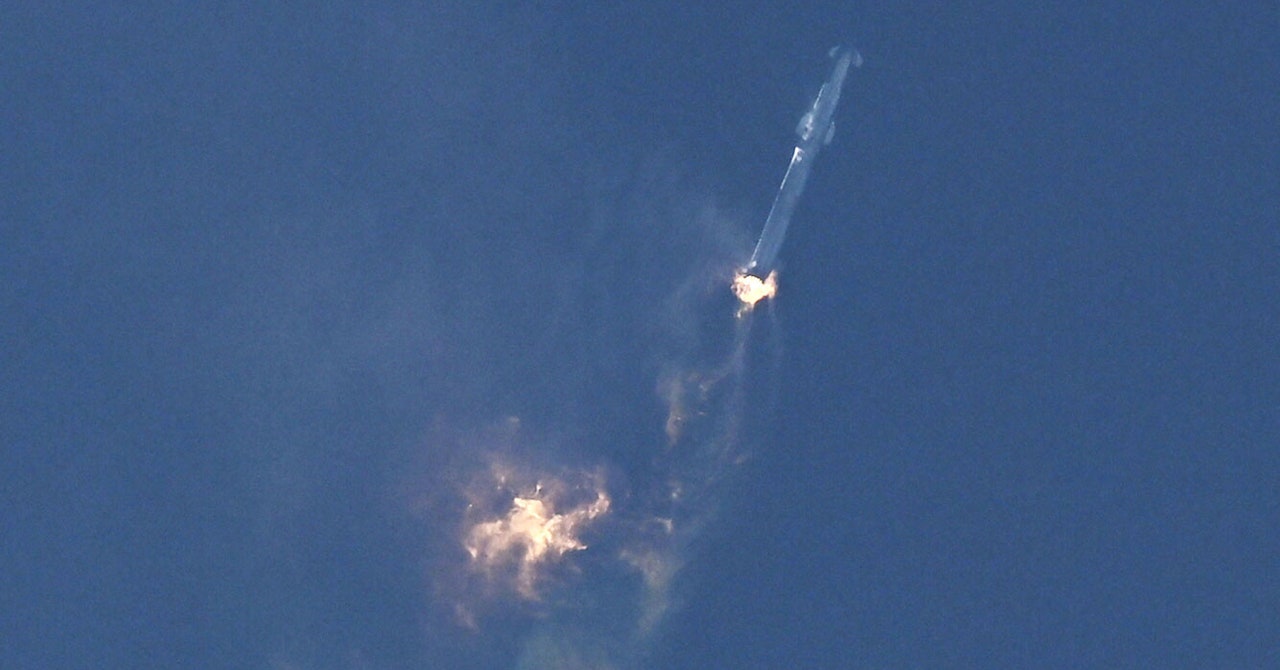
First-time orbital flights can be challenging and often fail, like Relativity Space’s 3D-printed rocket, which launched in March and flew until the second stage engines faltered, meaning the spacecraft could not reach orbit. Others succeed, like NASA’s closely-watched first flight of the massive Space Launch System and Orion last fall—although valve-related glitches prompted several scrubs before NASA achieved liftoff. Some 11 percent of FAA-licensed launches fail, Coleman said, and the agency wants to ensure that a mishap, such as an explosion or falling debris, doesn’t harm the public or the environment.
At the moment, Starship is an unproven program, and the FAA has said they would investigate should a mishap occur. Since the exploding rocket and Starship could have flung shrapnel or fuel onto the ground, the agency will likely assess whether local communities or wildlife habitats may have been affected.
Musk himself suggested this Starship flight only had a 50 percent chance of success. At a Twitter Spaces event for his subscribers on April 16, Musk expressed concern about possible damage to the launchpad if Starship blew up during or soon after launch. The company has had difficulties during tests of Starship prototypes, including a pressure test in 2019 when an upper tank burst and an explosion during a rocket engine test in 2020. Multiple lower-altitude flight tests have ended in explosions.
SpaceX engineers scrubbed their first attempt for the orbital test flight on April 17 due to a frozen valve in the booster rocket’s pressurization system, similar to the problems NASA faced last year.
SpaceX’s liquid methane and oxygen-fueled Super Heavy, powered by 33 Raptor engines, could be considered a potential rival to NASA’s SLS rocket. They are the world’s two most powerful rockets, both with millions of pounds of thrust; both heavy-lift launch vehicles are capable of bringing astronauts and large payloads to the moon and Mars. The SLS Block 2 configuration, which NASA will use for future moon missions, will be nearly as tall as the combined height of Starship and Super Heavy. But SpaceX’s spacecraft can carry a much larger payload, and it will likely become far cheaper because of its reusability.
NASA’s counting on SpaceX—a frequent commercial partner and the recipient of billions of dollars in agency investments—to get Starship working properly. The second Artemis mission in late 2024 will fly NASA and Canadian astronauts around the moon with the Orion spacecraft. Next will come historic moon landings. NASA awarded SpaceX contracts for the Artemis 3 and 4 missions in 2025 and 2028, beating rival Blue Origin. For those, SpaceX has agreed to deliver a modified version of Starship that will bring astronauts from an Orion capsule in lunar orbit to the moon’s surface and back again.
In the long-term future, Starship might be used for lunar mining missions and for refueling flights en route from Earth to Mars, says Phil Metzger, a planetary scientist at the University of Central Florida who studies space economics. NASA wants to extract resources from water ice on the moon, and the oxygen from that could be used for fuel. Metzger argues that Starships could play a role in that lunar mining economy as it develops. “I think that Starship is going to be revolutionary. I think it will dramatically lower the costs and increase the activities in space. That will be good for science, good for economics, and good for the environment,” he says.
Musk’s dreams of martian colonization depend on Starship, too. He has spoken about wanting to build a civilization of a million people on Mars, carried there by thousands of Starships. If it’s possible, that vision will face numerous risks, ethical questions, and logistical challenges. And, crucially, it also depends on successful Starship tests.


